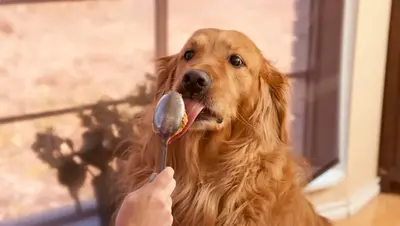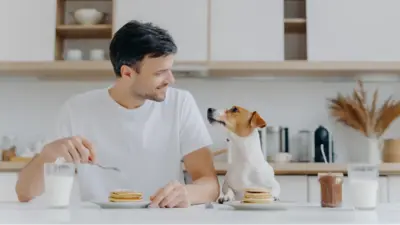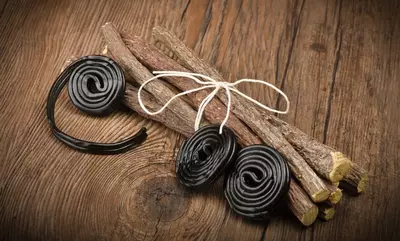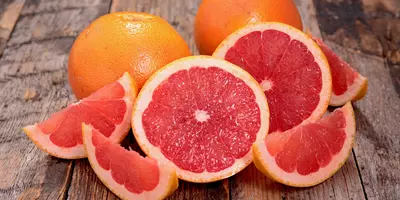How Much Water Should a Dog Drink Per Day?
- 04 May 2023
- 7m read
.png)
Water; it’s the most essential element to life. Clean, fresh water should be available to your dog at all times so that they are well hydrated, both at home and on the go.
Generally speaking, dogs should not go more than a day without drinking water.
Of course, this is of no help if they aren’t terribly interested in drinking in the first place. Whether your dog is drinking too much or too little water, we hope this will help you get to the bottom of the root cause.
How Much Water Does a Dog Need?
A dog’s normal water intake will vary depending on the individual, the moisture content of their food, how active they are and the time of the year. This typically ranges between 25-70 ml/kg body weight per day. However, this can vary depending on the weather and their level of activity.
For example, a 10kg Cockapoo drinking 50 ml water per kg will drink around 500 ml of water in a day.
Why Is My Dog Drinking So Much Water?
Are you noticing that your dog is suddenly drinking a lot more water than usual? There are a number of different reasons that this could be happening, but don’t necessarily panic yet. It is worth noting that fluctuation in water habits can be completely normal. Hot weather, for example, could cause increased thirst. Other reasons that your dog might be drinking more water include:
- Diet (dry food in particular can make dogs thirsty)
- Dehydration
- Diabetes
- Diarrhoea
- Fever
- Heatstroke
- Infections
- Kidney problems
- Liver problems
- Medications
If your dog is drinking more water than is considered normal for a prolonged period of time, we would recommend consulting with your vet to ensure that there is no underlying cause.
Why Is My Dog Not Drinking Water?
On the flip side, you may be noticing that your dog is suddenly drinking a lot less water than usual. Before panic mode sets in, be sure to check that it’s not just your pup being ultra-fussy. Sometimes, even just a slightly dirty water bowl or warm water can put a pooch off drinking. Other reasons why your dog might be drinking less water include:
- Diet - certain dog foods may have a higher moisture content which could be helping to hydrate them, reducing their water needs
- Anxiety
- Bladder / urinary tract infections
- Dental problems
- Diabetes
- Kidney problems
- Old age
How to Get a Dog to Drink Water
It can be worrying when your pooch doesn’t drink enough water. It doesn't necessarily mean that there is something wrong, but it's important to do all you can to encourage them to drink. We’ve listed some handy tips below that are a good place to start.
Make sure their water and the bowls are clean
Well all enjoy cool, fresh water. So does your dog. Changing their water frequently throughout the day will make it appear more refreshing. Make sure to wash their water bowls regularly too. Saliva and slime can build up on the bowl over time and can taste funny to fusspot dogs. High five for hygiene. If possible, avoid highly scented cleaning products, such as lemon washing up liquid, as this can be off-putting for dogs.
Water bowl options
Some dogs like drinking from ceramic, stainless steel and plastic bowls. Give your dog some options, including spacing multiple water bowls throughout the house, and even in the garden, for easy access. This is particularly important if you have more than one dog at home.
Water fountain
Does your dog like to drink from running sources like the tap or a stream? If so, consider a pet drinking fountain. They constantly circulate and some even filter the water, so it stays cleaner and tastes fresher. Very OTT we know, but let’s face it, they’re worth it.
Add different flavours and textures
Ice cubes can make a great summer treat for your dog. You can even add some low salt chicken or bone broth to the water ready to freeze, or pop it directly to their water bowl as a splash of flavour.
Or how about making a Butternut Box pup-sicle using this recipe?
Mix the juice from your thawed Butternut Box meals, 100g of Peanut Butter, such as Pip & Nut and a mashed banana. Scoop into a popsicle mould, freeze and treat.
Drinking on the go
Whether it’s a short walk around the park, a lovely long hike or a trip in the car, always bring some water with you. Your dog will become more familiar and accustomed to drinking water in different places and they will always be hydrated on the go.
Can Dogs Drink Sparkling Water?
No, dogs should not drink sparkling / carbonated water.
Whilst it is not necessarily harmful to dogs, it should be avoided as much as possible. There is no need to give your dog sparkling water, unless still water is unavailable.
Let's say for example, you’re out on a walk and your dog is gasping for a drink, but all you have is a bottle of sparkling water. It will not harm your dog in small amounts and will relieve their thirst, but it should be a last resort.
Excessive consumption of sparkling water can result in a very upset tummy for your pooch and in extreme cases, Gastric Dilatation Volvulus (GDV), which can be life threatening.
Can Dogs Drink Flavoured Water?
Dogs should not drink water that contains artificial flavours and sweeteners, like the kind found in supermarkets formulated for humans.
These ingredients are toxic to dogs and can cause adverse reactions, like vomit and diarrhoea.
Alternatively, adding natural flavours to your dogs water is a great way to encourage them to drink more. As with all new things added to a dog’s diet, this should be done so slowly and gradually, whilst closely monitoring their reaction. Some of our favourites include:
Broth
Chicken and beef broths are a popular choice for dogs, like those found in our Bish Bash Broths. These can be added to your dog's water directly or frozen into ice cubes to be added later. A brothsicle if you will. This is not only a great way to enhance flavour, but will also give them a boost of essential nutrients.
Lemon
Another way to spice up your dog’s water is to add a couple of drops of lemon. As lemon is very acidic, we really mean a couple of drops. As well as being rich in vitamin C, lemon is also an effective way to help keep your dogs breath smelling fresh. You should only use fresh lemon for this, not the concentrated kind found in a bottle.
Apple cider vinegar
Not just for humans, apple cider vinegar is the next contender on the list. Similarly to lemon, this should be added to dogs' water sparingly, a couple of drops at a time. From digestive support to promoting joint health, apple cider vinegar has a number of benefits.
What Can Dogs Drink Besides Water?
Sometimes, dogs simply get bored of drinking plain, fresh water. Whilst it is the best possible thing for them to drink, there are some other options that you can try to keep them satisfied.
- Unsalted bone broth
- Vegetable juices, such as carrot, cucumber or celery with no added ingredients
- Cows milk (in very small quantities, such as a splash in their water bowl)
The following liquids are NOT suitable for dogs to drink. If you suspect that your dog has ingested any of these things, contact your vet immediately.
- Contaminated water, such as ponds or pools, due to the bacteria and chlorine risk
- Coffee
- Tea
- Fruit juice
- Fizzy drinks
- Alcoholic drinks
- Nut milks (particularly macadamia as this is toxic to dogs)
- Chocolate-based drinks
Water Content in Butternut Box Meals
Butternut Box meals naturally have a high moisture content. This is because our meals come directly from real, fresh ingredients and are gently cooked, as opposed to dry dog foods, which are concentrated and processed at very high temperatures.
In-House Vet Dr Ciara’s Advice
Dogs should never go more than a day without water. If your dog is drinking too little or too much water and you are worried about their water consumption, we recommend making an appointment with your local vet. If you can bring a fresh sample of urine, ideally the first pee of the day, this will be all the more helpful!
Butternut Box customers have 24/7 access to our Vet Nurse helpline who are always on hand (or paw) to help you with any concerns you may have, no matter how big or small.

.webp)


